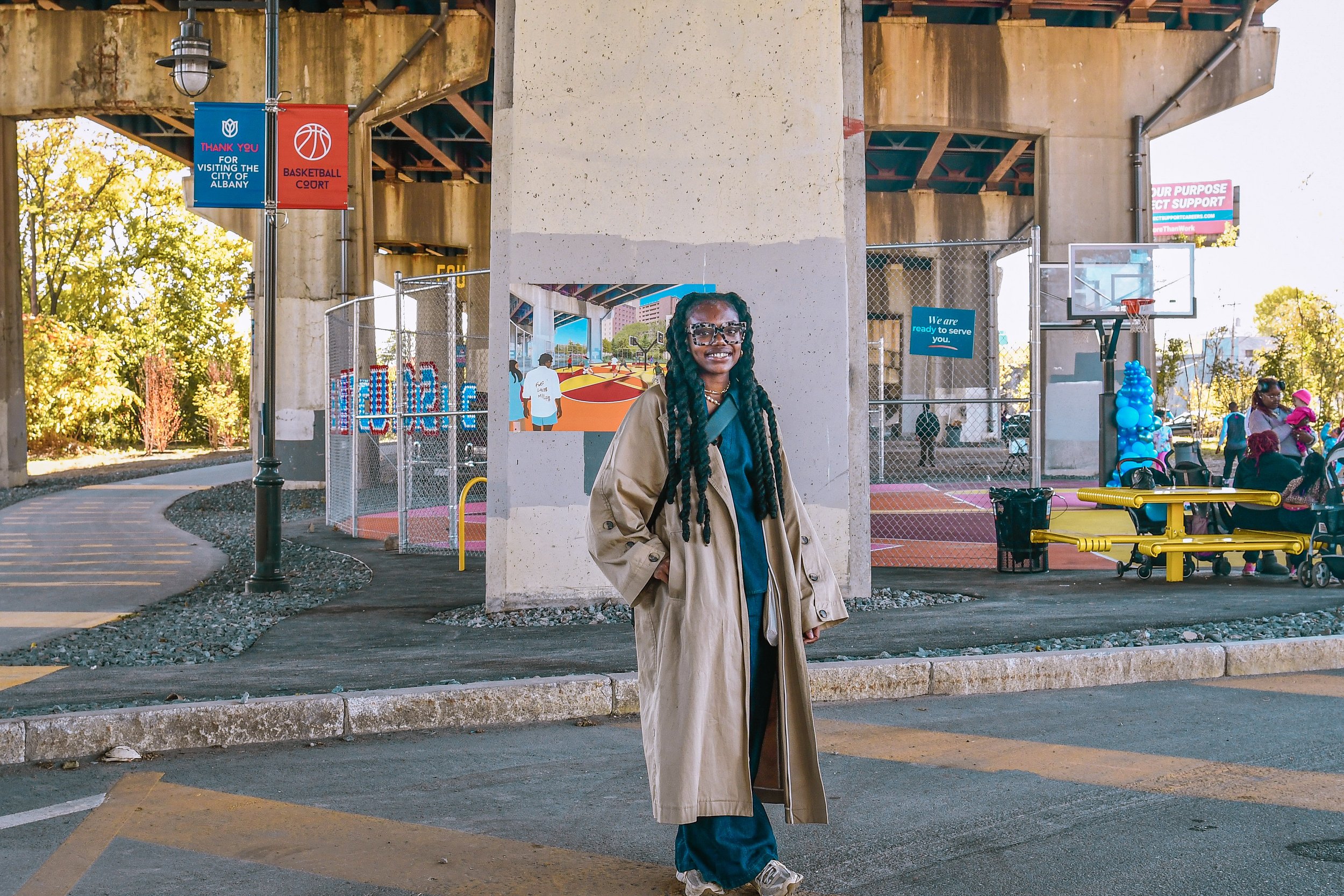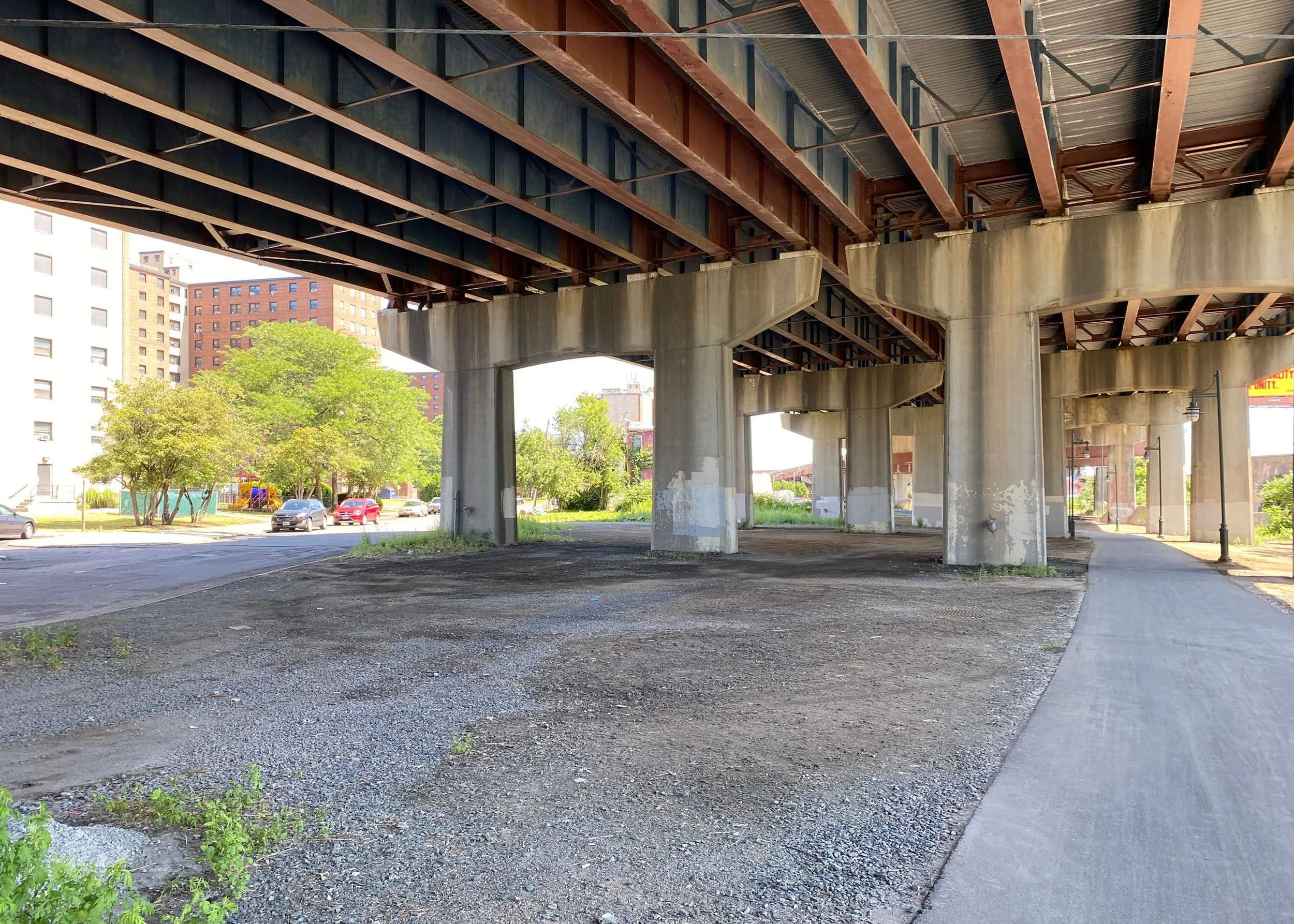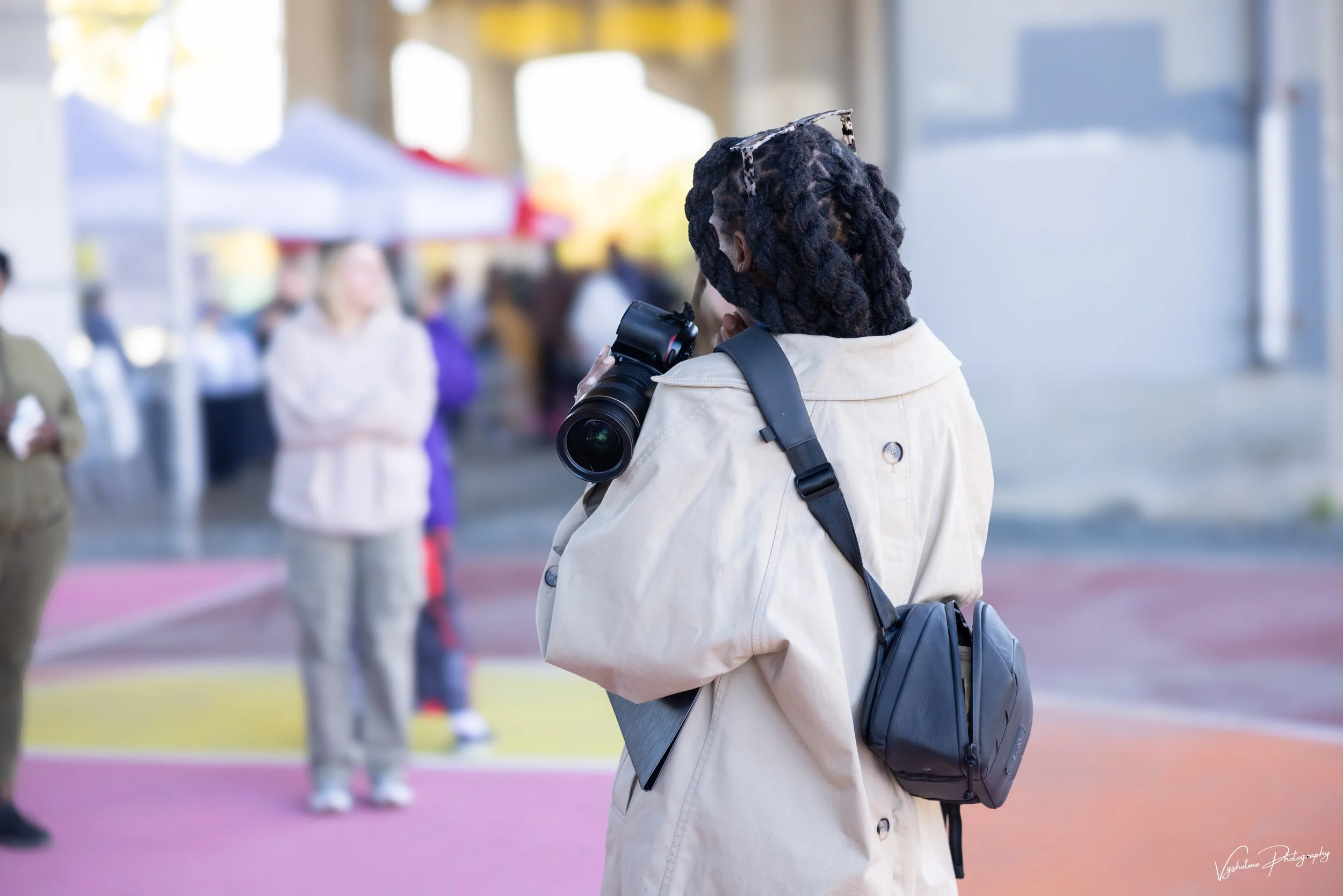South End Connector
The South End Connector is more than just a bike and pedestrian path — it’s a powerful symbol of Albany’s commitment to equity, sustainability, and community-first design. Located in one of Albany’s historically underserved neighborhoods, the Connector physically and symbolically closes a long-standing gap between the South End and the rest of the city’s growing network of trails and greenways.

Background
For decades, I-787 cast a literal and symbolic shadow over Albany’s South End. Constructed during an era of highway expansion that cut through urban neighborhoods across the country, the elevated highway displaced South End residents, severed ties to the waterfront, and contributed to systemic disinvestment in the area.
The South End Connector reclaims this space — not by removing the highway, but by adapting the environment beneath it. What was once a gray expanse of concrete and neglect is now a greenway designed for pedestrians, cyclists, and neighborhood life. This is adaptive reuse at its most powerful: reshaping infrastructure to serve the people it once overlooked.
By threading through the overpass piers of I-787, the Connector literally and figuratively weaves the neighborhood back together — linking the South End to the Albany County Rail Trail, the Empire State Trail, and the Hudson River waterfront, while offering a safer, greener route to and from Downtown.
my role.
As Project Manager for the South End Connector, I worked in close collaboration with the City’s Senior Project Planner to bring this transformative urban trail to life. Positioned within the Mayor’s Office and serving as the Director of Marketing, I was uniquely situated to bridge policy, planning, and storytelling — ensuring the project didn’t just get completed, but that it was embraced and celebrated by the community it served.
While the project navigated complex state permitting processes and limited funding, I helped fill critical gaps through strategic creative direction, coordination, and hands-on implementation. My role extended beyond traditional project oversight into the realm of urban storytelling, neighborhood engagement, and adaptive problem-solving.
This was not just a project about transportation — it was about dignity, visibility, and design justice. I’m proud to have helped shepherd this project from blueprint to community asset, and to have played a role in reframing a long-overlooked corridor as a symbol of adaptive reuse and neighborhood resilience.
















My current role.
-
Ensured project momentum during prolonged regulatory delays by leveraging executive visibility and interdepartmental coordination.
-
Designed and installed a custom branded backboard to replace one that was vandalized, preserving the park’s visual identity and usability without many additional City funds.
-
Developed trail signage, visual markers, and branding elements that reflect the cultural identity and resilience of the South End neighborhood.
-
I didn’t just help execute the infrastructure — on behalf of the Mayor, I ensured the community felt seen, celebrated, and centered. I orchestrated and planned the South End Connector ribbon cutting, transforming a public works milestone into a joyful community celebration.
To mark the occasion, I partnered with local organizations and City departments to:
Give away 66 free bikes to South End residents, promoting access to the very trail we opened.
Coordinate free meals from Hattie’s, a beloved and newly expanded Capital Region chain, as a nod to the neighborhood’s cultural relevance and a celebration of community investment.
Invite elected officials, neighborhood leaders, youth organizations, and city planners to participate in a truly inclusive opening that reflected the spirit of the South End and the people who call it home.
-
Acted as a connector between city departments, the Mayor’s Office, and residents to make the project feel locally owned and contextually relevant.



































